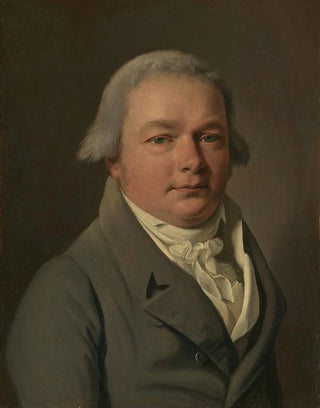Art print | Portrait of a man - Louis Léopold Boilly


View from behind

Frame (optional)
The art is an open window into the human soul, and the "Portrait of a man" by Louis Léopold Boilly is a striking illustration of this. This work, created in the early 19th century, not only showcases the technical mastery of the artist but also reflects the social and cultural context of its time. By contemplating this portrait, the viewer is invited to immerse themselves in a universe where every detail, every expression, tells a story. Boilly's ability to capture the essence of his subjects, through meticulously crafted strokes, makes this piece a true masterpiece that transcends mere portraiture.
Style and uniqueness of the work
Louis Léopold Boilly's style is characterized by finesse and precision that are uniquely his own. In the "Portrait of a man," he manages to establish an almost palpable connection between the subject and the viewer. The interplay of light and shadow, skillfully orchestrated, highlights facial features and adds emotional depth to the piece. The composition is carefully balanced, with each element arranged to enhance the visual impact. Boilly excels in rendering textures, whether of skin, clothing, or accessories, creating an illusion of reality that captivates. This portrait does not merely depict an individual; it evokes a personality, a story, and perhaps even a rich, complex inner world.
The artist and his influence
Louis Léopold Boilly, born in 1761, is an emblematic figure of the artistic movement that emerged at the end of the 18th century and the beginning of the 19th century. His work is set against a backdrop where portrait painting experienced a renaissance, marked by a desire for authenticity and closeness to the subject. Boilly, with his innovative approach, captured the nuances of everyday life and the subtleties of human emotions. His influence is felt not only through his own creations but also in the work of many artists who followed him. By adopting a style that combines realism and sensitivity, he paved the way for new explorations in the field of portraiture, making his works timeless and universal.
A wall decoration

Matte finish

View from behind

Frame (optional)
The art is an open window into the human soul, and the "Portrait of a man" by Louis Léopold Boilly is a striking illustration of this. This work, created in the early 19th century, not only showcases the technical mastery of the artist but also reflects the social and cultural context of its time. By contemplating this portrait, the viewer is invited to immerse themselves in a universe where every detail, every expression, tells a story. Boilly's ability to capture the essence of his subjects, through meticulously crafted strokes, makes this piece a true masterpiece that transcends mere portraiture.
Style and uniqueness of the work
Louis Léopold Boilly's style is characterized by finesse and precision that are uniquely his own. In the "Portrait of a man," he manages to establish an almost palpable connection between the subject and the viewer. The interplay of light and shadow, skillfully orchestrated, highlights facial features and adds emotional depth to the piece. The composition is carefully balanced, with each element arranged to enhance the visual impact. Boilly excels in rendering textures, whether of skin, clothing, or accessories, creating an illusion of reality that captivates. This portrait does not merely depict an individual; it evokes a personality, a story, and perhaps even a rich, complex inner world.
The artist and his influence
Louis Léopold Boilly, born in 1761, is an emblematic figure of the artistic movement that emerged at the end of the 18th century and the beginning of the 19th century. His work is set against a backdrop where portrait painting experienced a renaissance, marked by a desire for authenticity and closeness to the subject. Boilly, with his innovative approach, captured the nuances of everyday life and the subtleties of human emotions. His influence is felt not only through his own creations but also in the work of many artists who followed him. By adopting a style that combines realism and sensitivity, he paved the way for new explorations in the field of portraiture, making his works timeless and universal.
A wall decoration






